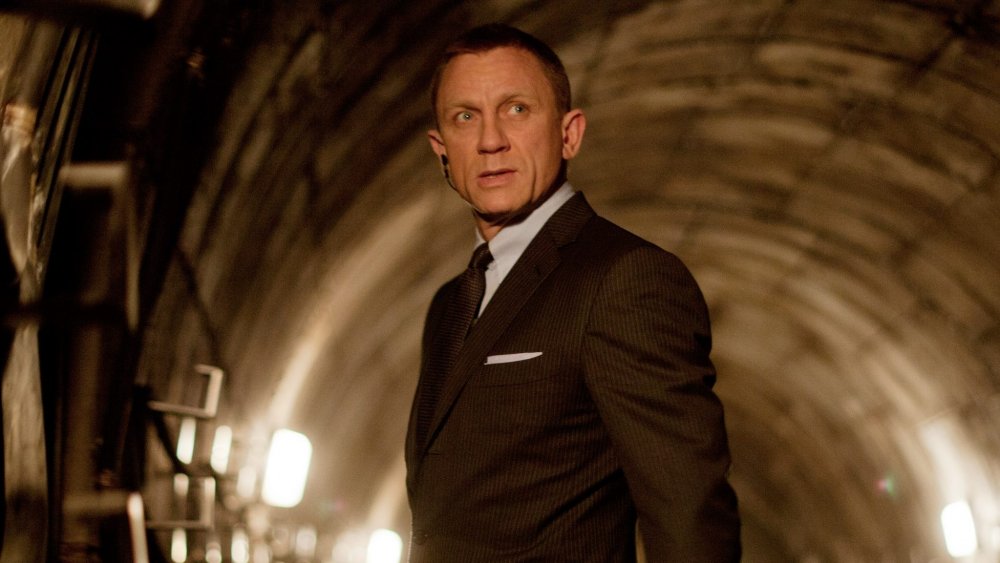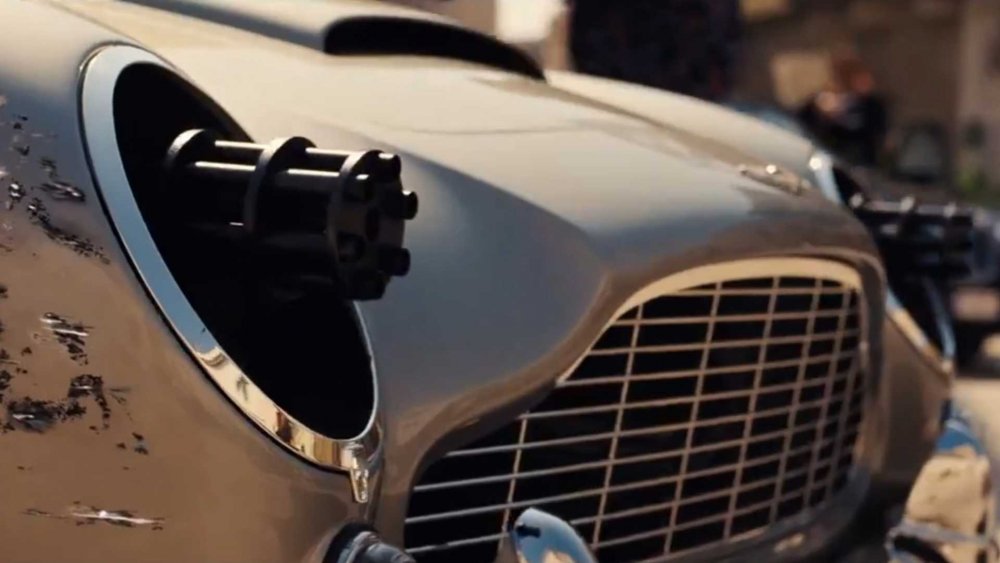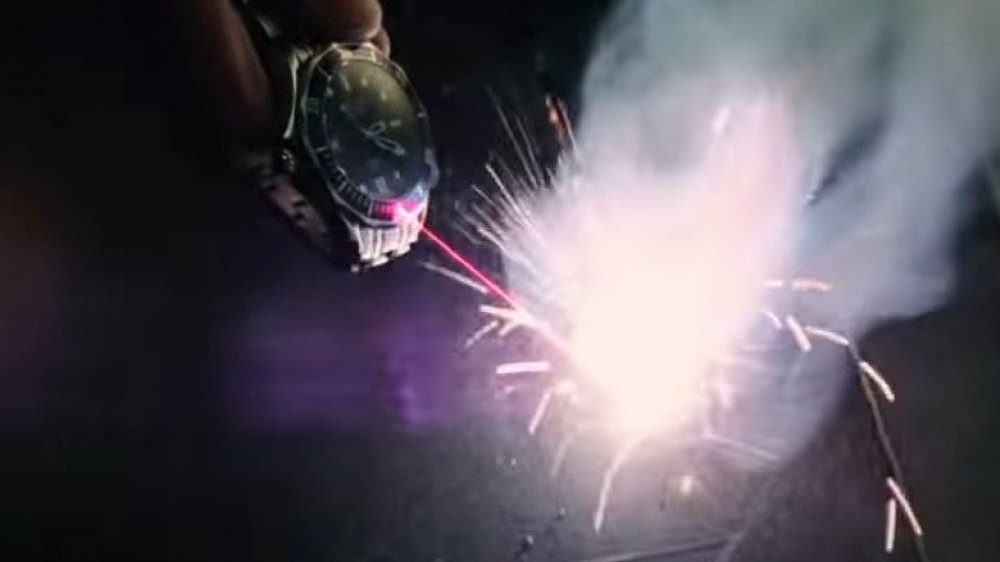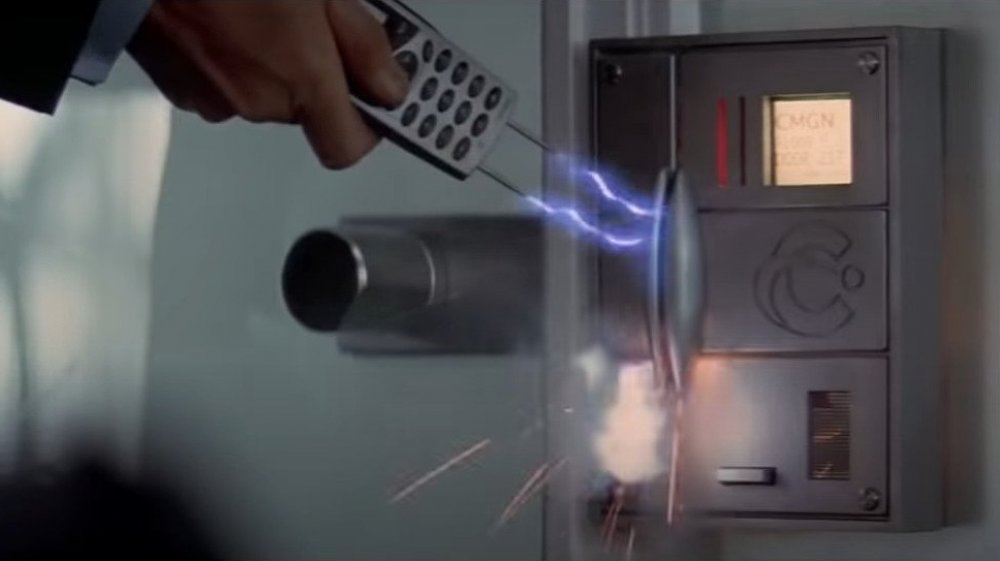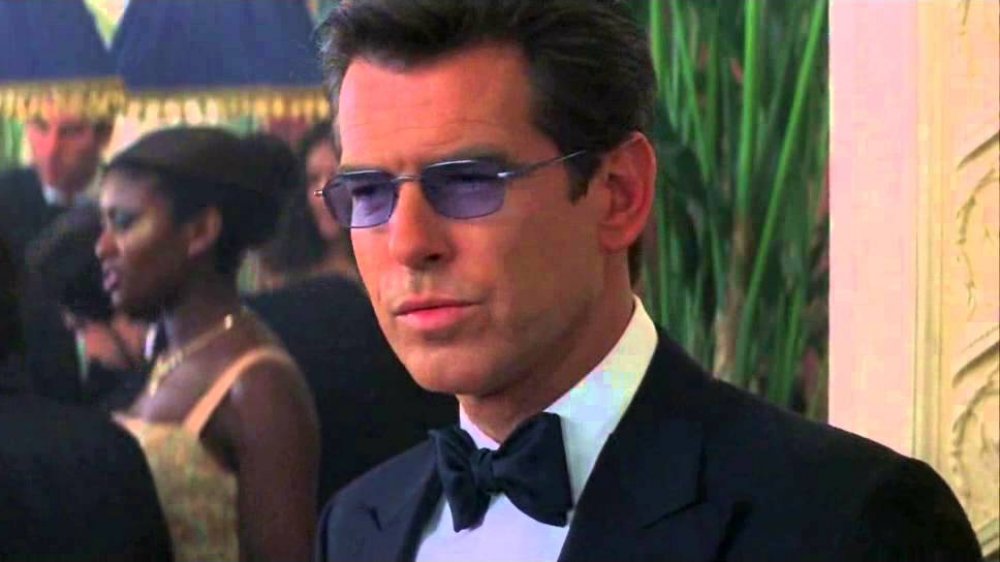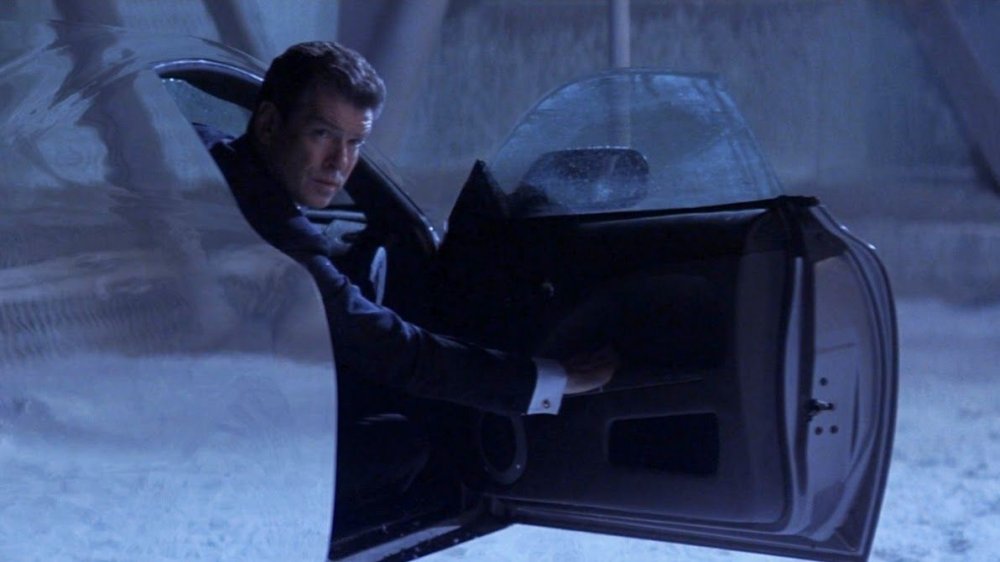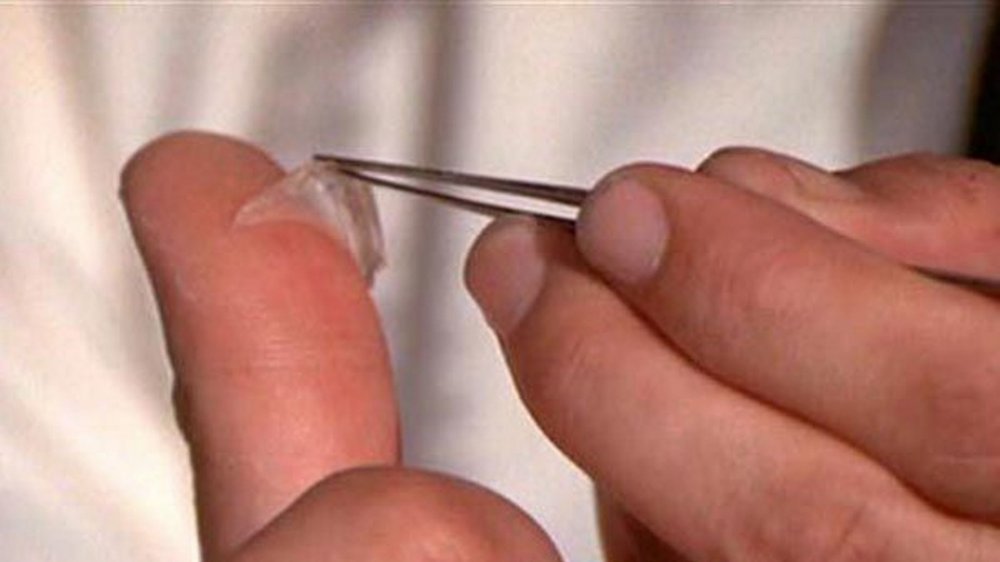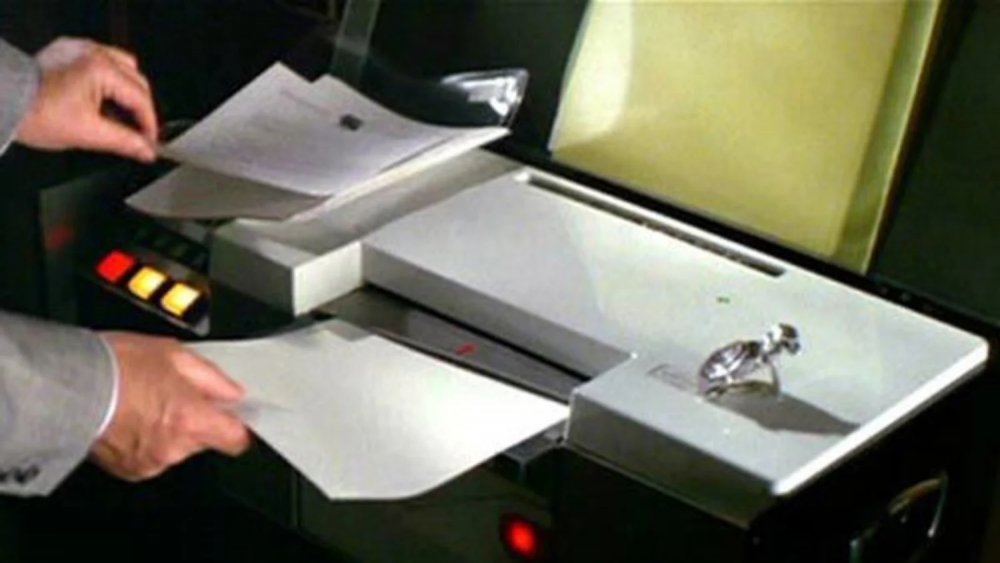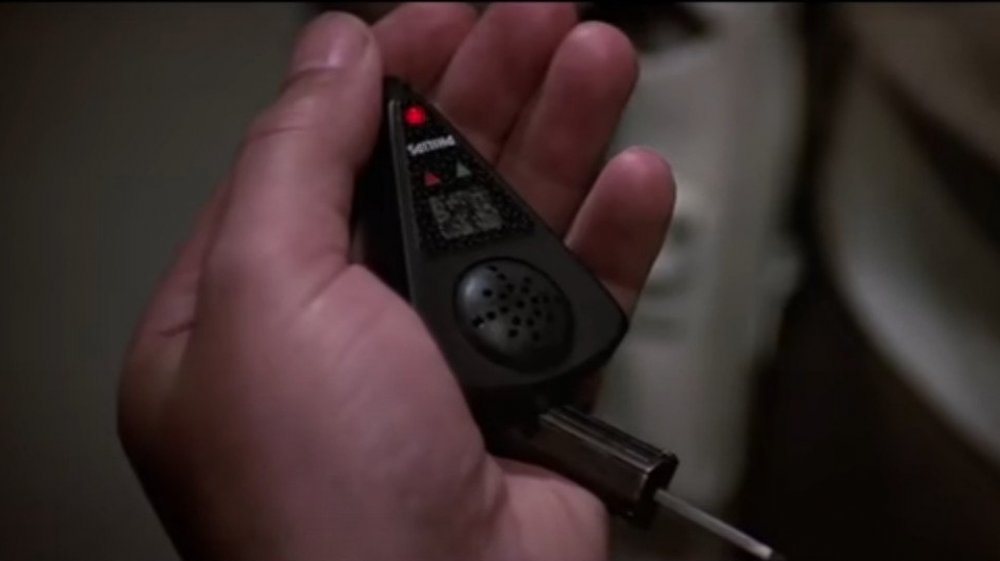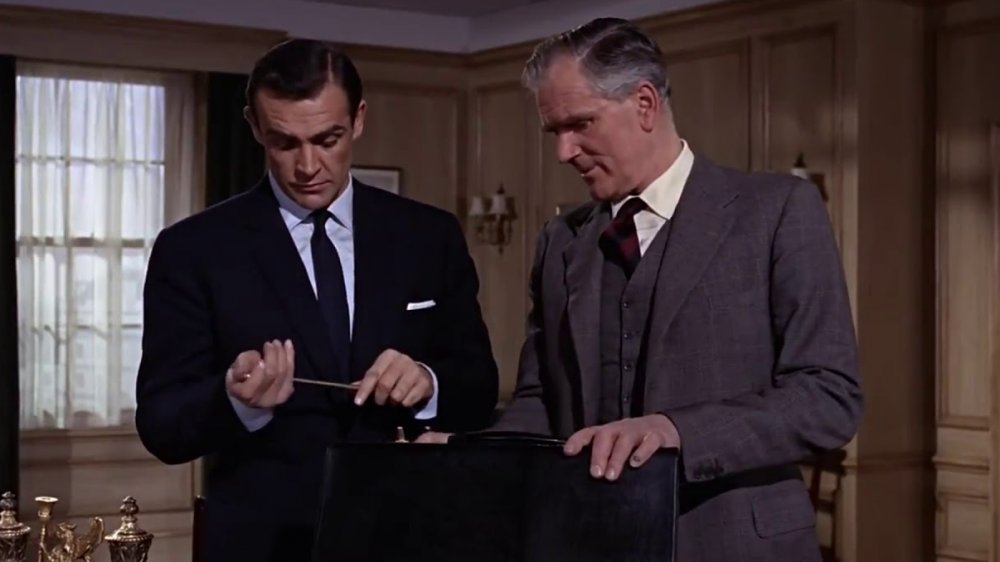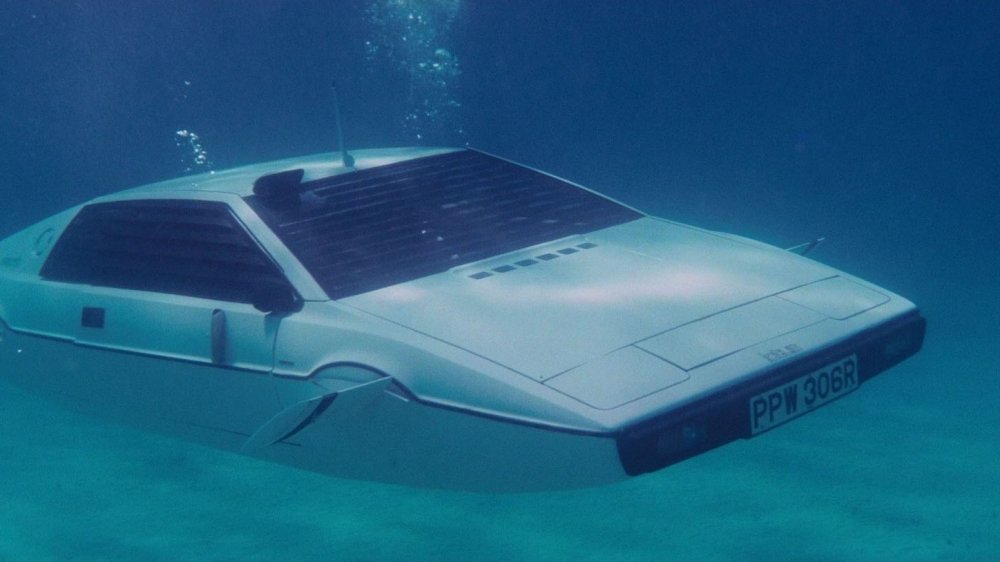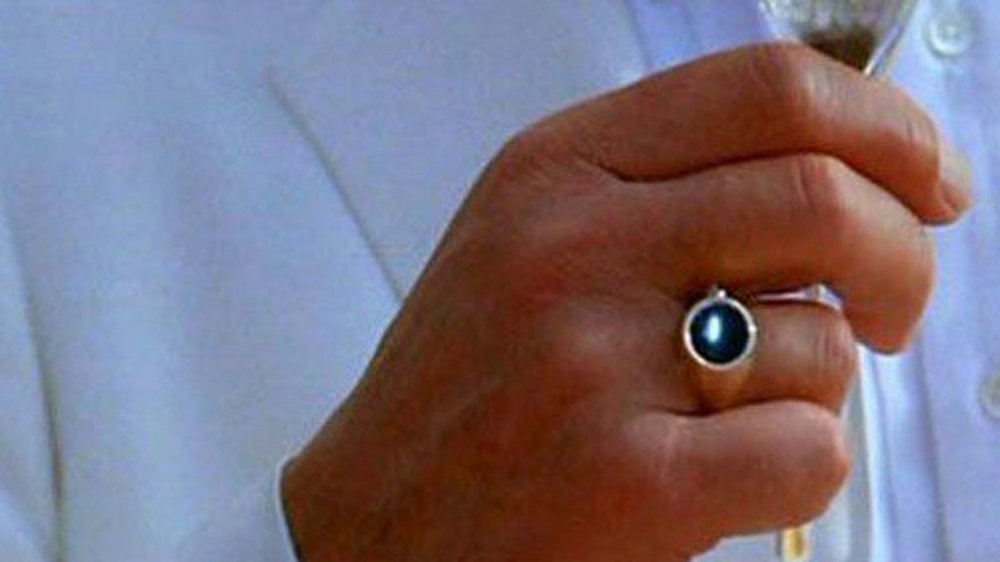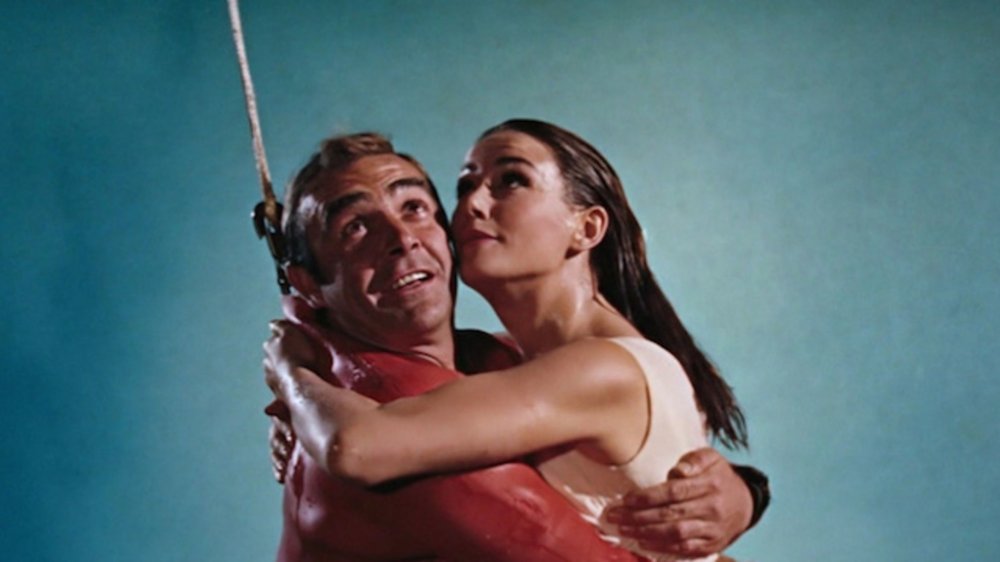The Most Useful Gadgets In James Bond History
Just like Bond girls and the opening gun barrel sequence, Bond gadgets are a quintessential element to the franchise's popularity. We're talking about X-ray glasses, underwater cameras, and explosive glasses. The first Bond gizmo appeared way back in 1962's Dr. No, when James Bond asked for a Geiger counter from MI6 to detect radiation. Ever since then, nifty tools became a staple for the films that followed, often helping Bond infiltrate lairs, take out henchmen, or escape dire situations. Of course, we have to mention the mastermind behind most of those gadgets — Q, who is MI6's weapons developer.
Over six decades and 20-plus Bond films, we've seen tons of fascinating gadgets. Some of them were extremely useful ... others not so much. And that's where this article brings us. From multipurpose wristwatches to nifty cars, these are the most useful gadgets in James Bond history.
One quick consideration before we dive into our article: Some of these gadgets are inherently outdated because so much time has passed. We tried our best to consider these tools in their historical context when they were more novel. Nevertheless, newer films have a natural advantage because more advanced technology was available to them. Still, we will mention some older gadgets that were incredibly useful for their time.
Bond loves using his Aston Martin
We had to kick off this list with the Aston Martin. Even though the Bond franchise has introduced various car models such as Audi and BMW, the Aston Martin will always be the car we associate with James Bond. In some ways, the Aston Martin is James Bond's nonhuman sidekick, going with him on various missions and helping out in several movies. But this classy car isn't just for looks. The Aston Martin is equipped with tons of add-ons that make it as useful as it is beautiful.
The Aston Martin has a display in the dashboard that can track homing devices. It has a little spout in the rear that shoots oil to slip up any enemies on Bond's tail. Oh, and just in case Bond wants to mix it up, his car also has a different spout that blasts smoke. Meanwhile, on the front end, Bond's Aston Martin has headlights that can pop out machine guns and shred villains to pieces. Every window is bulletproof, and just in case Bond's passenger is really annoying him, there's an ejector seat for the passenger side. What's even cooler is that the license plates can rotate to different plates depending on which country Bond is in. Neat.
Bond's Omega Seamaster wristwatch is really nifty
As all Bond film enthusiasts know, the wristwatch is a classic Bond gadget. It's kind of like the secret agent's Swiss Army knife, with multiple features and capabilities. What makes this particular gadget so darn useful is that not only is it multipurpose, but it is also conveniently small and always within reach. Over the decades, Bond films have showcased various tricked-out wristwatches. For example, in Live and Let Die, Bond totes a Rolex Submariner which can spin rapidly, turning into a mini saw. Bond ends up using this to cut some rope to escape being tied up. The Bond creators continued to upgrade these watches with each film, giving them amazing capabilities, like pulling metal objects to them with magnetism and shattering glass in the distance with sonic technology.
Even though many of Bond's wristwatches are useful, perhaps the best one is the Omega Seamaster Wristwatch, which debuted in the 1995 Bond film GoldenEye, starring Pierce Brosnan. The Omega Seamaster has a freaking laser gun in it, which Bond uses to cut through a metal floor on a train. The Omega Seamaster can also activate remote mines that Bond places. If you played video games in the 1990s, you will fondly recall using this wristwatch on the Nintendo 64 game GoldenEye. Oh, and in the following films, it comes with a grappling hook that allows Bond to scale incredibly high walls.
The Sony Ericsson phone helps Bond more than once
We are time-traveling to the year 1997. While most Bond viewers didn't have a mobile phone (or if they did they were giant bricks), James Bond was using a slick, advanced mobile phone in Tomorrow Never Dies. The Sony Ericsson phone was, frankly, awesome, even if it does look a bit dated now. Sure, it couldn't Tweet, but it had a million other useful functions for our spy. This bad boy could pick any lock in the world, which alone puts it on the list of the most useful Bond gadgets of all time. But it could also scan fingerprints.
And if Bond gets into any kind of trouble, guess what? The Ericsson phone also serves as a stun gun. But the coolest part is its ability to remotely control Bond's luxury sedan. Yep, Bond can drive his car with his mobile phone. On one occasion, Bond goes to the garage and realizes that henchmen have surrounded his vehicle. But that's no problem because he just whips out his phone and has the car start up and pick Bond up. The entire chase scene is epic. From the backseat of his sedan, Bond drives around with his phone, which is equipped with a high-quality camera that shows Bond where he's going. With his Ericsson phone, Bond even can shoot missiles from his car. Pretty nifty.
These X-ray glasses come in handy
In classic Q fashion, he just takes a regular everyday item and turns it into super useful spyware. In this case, Q takes regular-looking sunglasses and equips them with X-ray powers. Roger Moore first used a pair of glasses like these in 1985 in A View to a Kill, where he used them to look through tinted glass. However, in 1999's The World is Not Enough, Pierce Brosnan used an upgraded version of these glasses at a mob-run casino.
Bond walks onto the floor to get a lay of the room. He dons his X-ray glasses, which allow him to see the weapons underneath everyone's clothes. And he can conveniently also see people's undergarments and naturally takes the occasion to ogle some women. Classic Bond. While Bond sneaks a peek or two, he's really here on business to meet with a mob boss named Valentin Zukovsky. Using his glasses, Bond identifies a henchman who can lead him to Zukovsky and also what weapons the henchman has. When the henchman approaches Bond, Bond man-handles him and disarms the guy. Bond looks awesome in this scene, but he never would've been able to look that cool without the intel he got from his X-ray glasses.
It always helps when your car can turn invisible
Bond uses several useful gizmos, but it's hard to beat the power of invisibility. In Die Another Day, Bond's classic Aston Martin gets a really cool upgrade, courtesy of Q. Bond's new car has a cloaking device which renders it invisible, or at the very least very difficult to notice. If you were standing next to the Aston Martin looking at it, it would seem as though you were looking through to the other side. As Q explains it, the car has tiny little cameras all over it, which record what's happening on one side and display it on the opposite side. It sounds super expensive and hard to pull off, but we expect nothing less from Q.
But, of course, villains will still notice a cloaked car if they ram it with a snowmobile at full speed and flip over it, which does end up happening in the film. Zao, an enemy henchman, is clever enough to use thermal vision to spot Bond's invisible car. After Zao shoots the Aston Martin a good bit with a machine gun, the car loses its active camouflage. Still, an invisible car is dead useful for sneaking up to an enemy stronghold, following unsuspecting villains, and conducting stakeouts. Maybe if Bond had parked his Aston Martin elsewhere, he would've had more time to make the most of his car's cloaking powers.
False fingerprints get Bond out of a jam
In the 1971 film Diamonds Are Forever, James Bond must go undercover as a drug smuggler known as Peter Franks. And, as we all know, whenever a good guy goes undercover, the bad guys must thoroughly vet them to make sure they are who they say they are. The bad guys aren't just going to check out Peter Franks on social media, so Bond has to be super convincing.
Diamond smuggler Tiffany Case intends to verify James Bond's (posing as Peter Franks) identity by using fingerprints. Her plan is subtle, as she discreetly takes a glass that Bond touched and removes his fingerprints from them. In her home, she has a fingerprint recognition machine (which were apparently massive back in 1971). But Bond is one step ahead of her. Before he used the glass, Bond put on fake fingerprints, essentially pieces of thin rubber with another person's prints. And it works. Case confirms that Peter Franks is indeed a fellow smuggler and totally not an MI6 agent. Bond doesn't seem interested in reusing this nifty tool, but we imagine that these false fingerprints could be used in a dozen other ways, such as getting past fingerprint recognition software when accessing high-security rooms.
The combination safecracker-copying machine is one of a kind
One of Bond's classic missions as a spy is to infiltrate a secure location and retrieve sensitive documents. Even better if he can photograph or copy them and leave the originals, giving the villains a false sense of security. As it so happens, Bond must go on such a mission in the 1969 film On Her Majesty's Secret Service. The documents are in a safe, so MI6 develops a gadget tailored for such an occasion. Enter the combination safecracker-copying machine. Admittedly, the device is rather bulky, but it served the dual purpose of cracking a safe and copying secret documents.
The device works like a charm. In fact, it's so useful that Bond takes the time to make a copy of a Playboy magazine in addition to all the sensitive papers he has to copy. There are two big reasons we're including this gadget on our list. One, it's incredibly unique. It would probably take a combination of other Bond gadgets to produce the same result that this one tool can give. Secondly, we love seeing spy tools. Sure, it's awesome that Bond uses gadgets to take out bad guys, but there's something exciting about a device that's exclusively for espionage. Plus, the combination safecracker-copying machine was pretty high-tech for the time.
This whistle-activated keychain saves Bond twice
The most useful Bond gadgets are often the multipurpose ones, and that's exactly what we have here with the whistle-activated keychain. It debuted in 1987's The Living Daylights, wielded by Bond star Timothy Dalton. This is perhaps one of Q's greatest gadgets. It looks like a simple keychain, but it's able to pick almost every single lock in the world. That alone puts it on this list because that is just downright useful. But it doesn't stop there. The keychain also has stun gas, serving as a weapon for Bond in dire times. But the cool thing is, the way you activate the gas is by whistling to the tune of "Rule, Britannia!" The keychain can also explode, which is also activated by whistling, but this time a simple wolf whistle will do.
Naturally, Bond uses this much-needed gadget in a time of need. While in prison, some guards are holding his keychain. Bond takes the opportunity to take a few steps back and starts whistling "Rule, Britannia!" And later, when villain Brad Whitaker is chasing Bond, Bond places the keychain in a strategic location and whistles at the right time to kill Whitaker. What makes the whistle-activated keychain so useful is that it's extremely deadly but disguised as an everyday object. It's often this combination that allows Bond to escape so many desperate situations since villains believe the gadget is harmless.
Bond's loaded briefcase is full of spy treats
Whenever you become a top-secret spy, you can't exactly go to a retailer and buy a starter kit for spying. So what other options are there? Well, when somebody becomes a double O agent at MI6, they receive a special briefcase, almost like a congratulatory gift of sorts. James Bond receives his in 1963's From Russia with Love, and inside the briefcase is all kinds of spy goodies. Bond gets a .22-caliber rifle, and it comes with two handy add-ons — a detachable suppressor and an infrared telescope. And naturally, it also comes with tons of ammunition.
Just in case Bond wants to get a little bit more close and personal, the briefcase has throwing knives which pop out of the case almost like a Pez dispenser. Inside the briefcase's various hidden compartments, there are 50 gold sovereigns. (Today, that's worth more than $20,000.) Bond certainly would not want this briefcase to fall into the wrong hands, and fortunately, the briefcase is equipped with a safety feature for such a situation. There is a tear gas cartridge that activates if anyone opens the briefcase in the wrong way, so basically, only the owner can safely open it. This briefcase would serve Bond well on any mission, and we wouldn't mind getting one as a birthday present. Where do we sign up?
Bond's Lotus Esprit can travel underwater
As much as we love the Aston Martin, there is one amazing feature that it lacks. In The Spy Who Loved Me, Bond gets a different snazzy car — a Lotus Esprit that can convert into a submarine. Yep, that's right. This thing retracts its wheels, and fins come out. First, let's just pause for a moment and appreciate the sheer awesomeness of a car that can both drive on land and travel underwater. Alright, moving on. The film's main villain, Karl Stromberg, lives in a moving underwater city called Atlantis. So naturally, Bond is going to find himself underwater trying to catch this guy. And it'll be pretty difficult to pull that off in his typical scuba gear. The Lotus Esprit submarine saves the day, which is one of the big reasons it makes this list.
It's really hard to argue with the utility of this invention. Basically, Bond can go anywhere in the world now, and he doesn't even have to switch from a regular, measly land car to a submarine to catch the villain. Bond vehicles are always a quintessential aspect of any solid Bond movie, but in this particular film, the creators went all out with a submersible car. The Aston Martin will always have a place in our hearts, but we've got to give it up to the Lotus Esprit for its underwater capabilities.
This ring camera is perfect for spying
The ring camera is a perfect blend of subtlety and utility. It debuted in 1985's A View to a Kill, and it came in handy when James Bond (played by Roger Moore) had to investigate crooked businessman Max Zorin (Christopher Walken). However, Zorin is a rich and paranoid entrepreneur with tons of security, making Bond's mission quite difficult. To gather intel on Zorin, Bond first assumes a false identity to attend one of his garden parties. It's there that Bond makes full use of the ring camera, which is incredibly small even by today's standards.
As Bond walks around, he strategically carries a glass of champagne and holds his hand steady, directly pointing the ring camera at anyone or anything that he wants to take a picture of. And as he makes casual conversation, the ring takes photographs, collecting much-needed information on the villain and his network. However, we do wonder why nobody at the party notices the extremely loud shutter noise the camera makes every time it snaps a picture. Probably, the director just wanted to make sure that the viewers knew what was going on. But in the future, Bond should step up his spy game and use a digital ring camera.
Spies need a gadget for extraction
Sooner or later, Bond is going to finish his mission, and that means he's going to need to be extracted from whatever crazy place he ended up in. In Thunderball, Bond finishes off the villain after a pretty intense speedboat chase. After a massive explosion, Bond and his companion Domino (Claudine Auger) are stranded in the middle of the ocean. Fortunately, MI6 has a system in place for retrieving their agents in such a situation. It's a surface-to-air recovery system, and while it's a tad crazy, it's super cool.
While Bond is in the water, a plane flies overhead, dropping an inflatable raft. It seems Bond has used this system more than once because he certainly knows what he's doing. He boards the raft and starts pulling straps and hooking things together while Domino observes curiously. Finally, Bond lets a balloon go into the air with a wire attached to his body. The aircraft turns around, catches the wire, and pulls Bond and Domino with them as it flies away. It's pretty epic, but we wonder how long they had to travel like that and what it's like to get off. But alas, we will never know because the film just rolls the credits.
